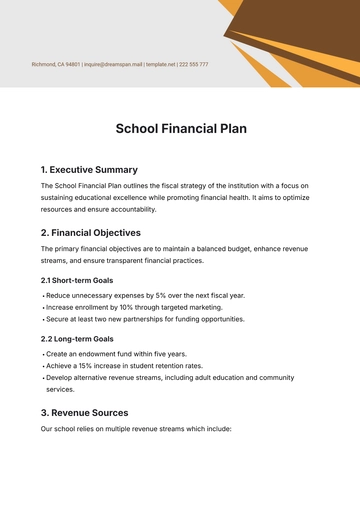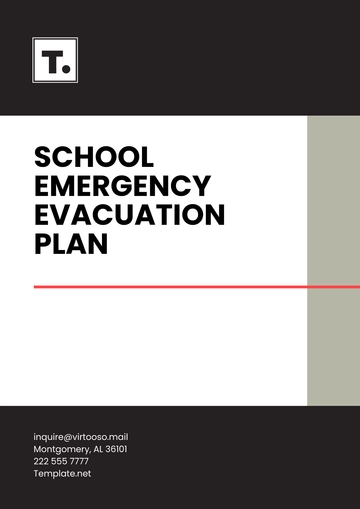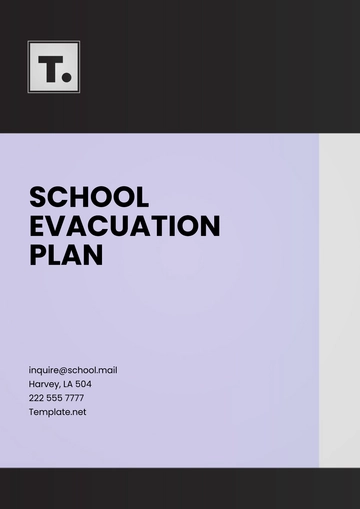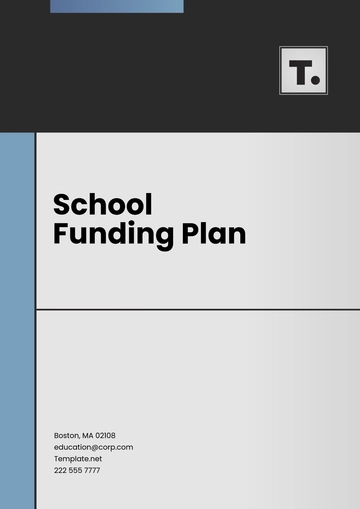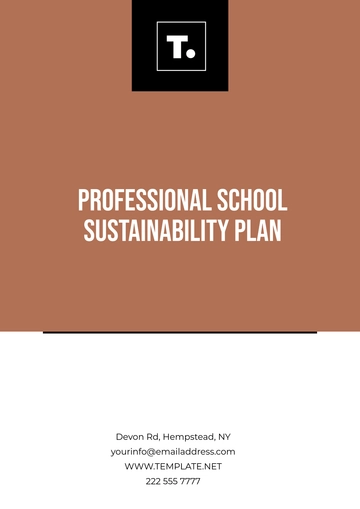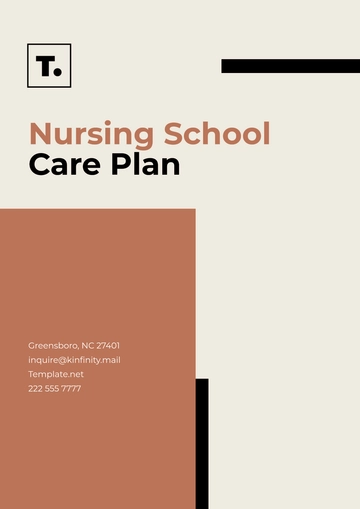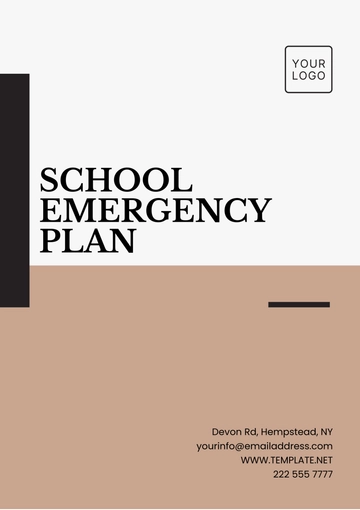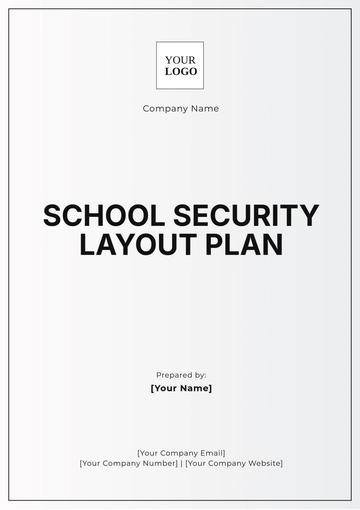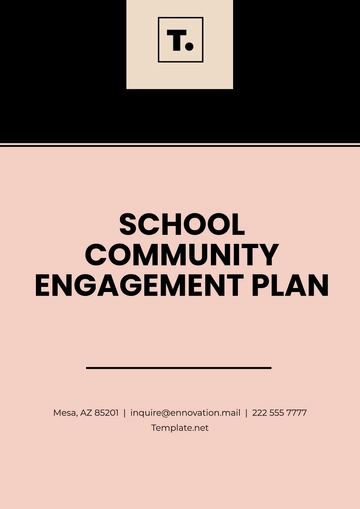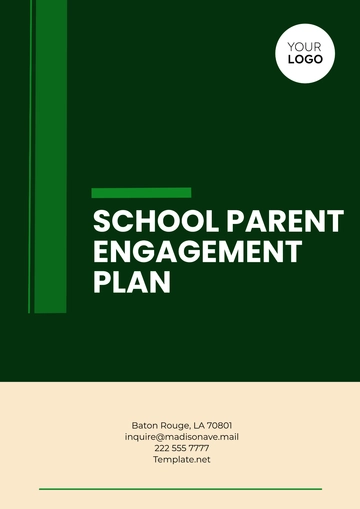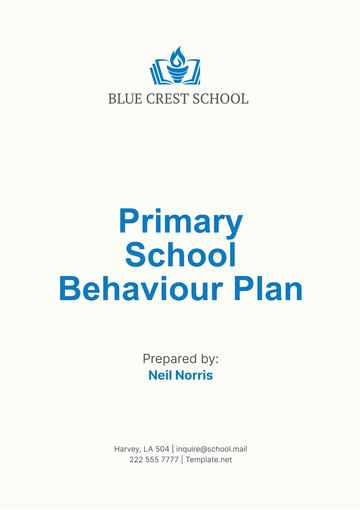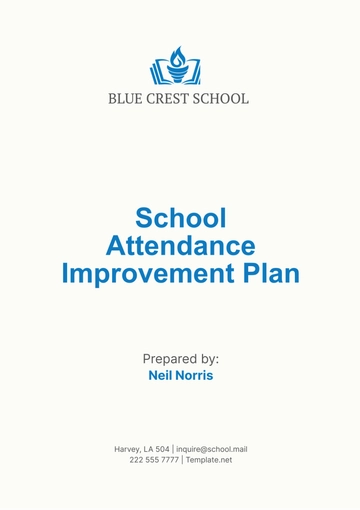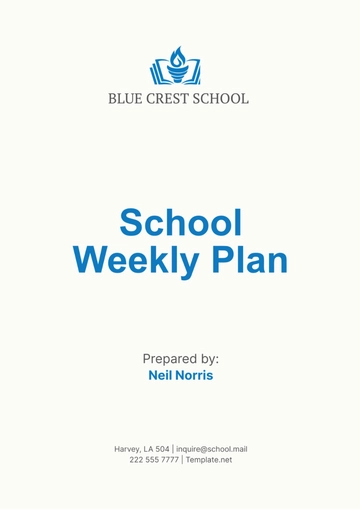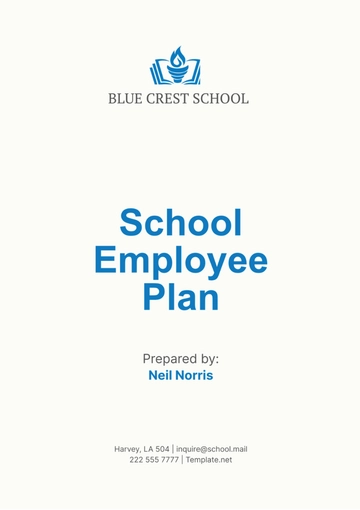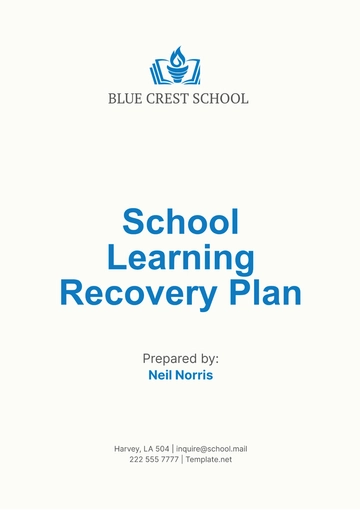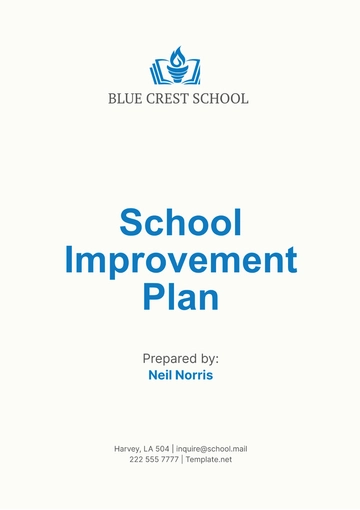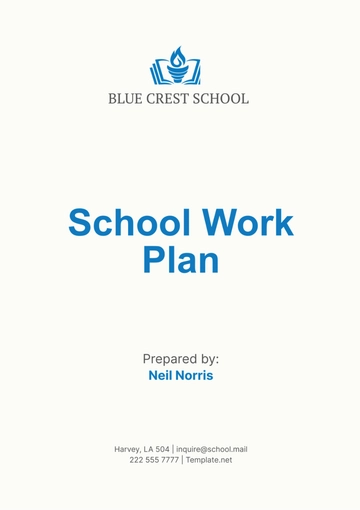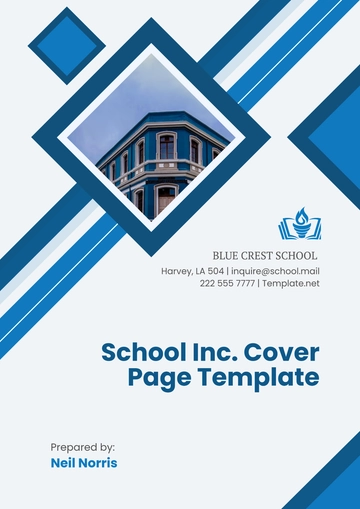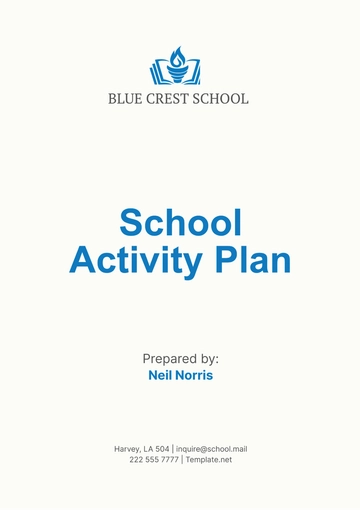Free High School and Beyond Plan
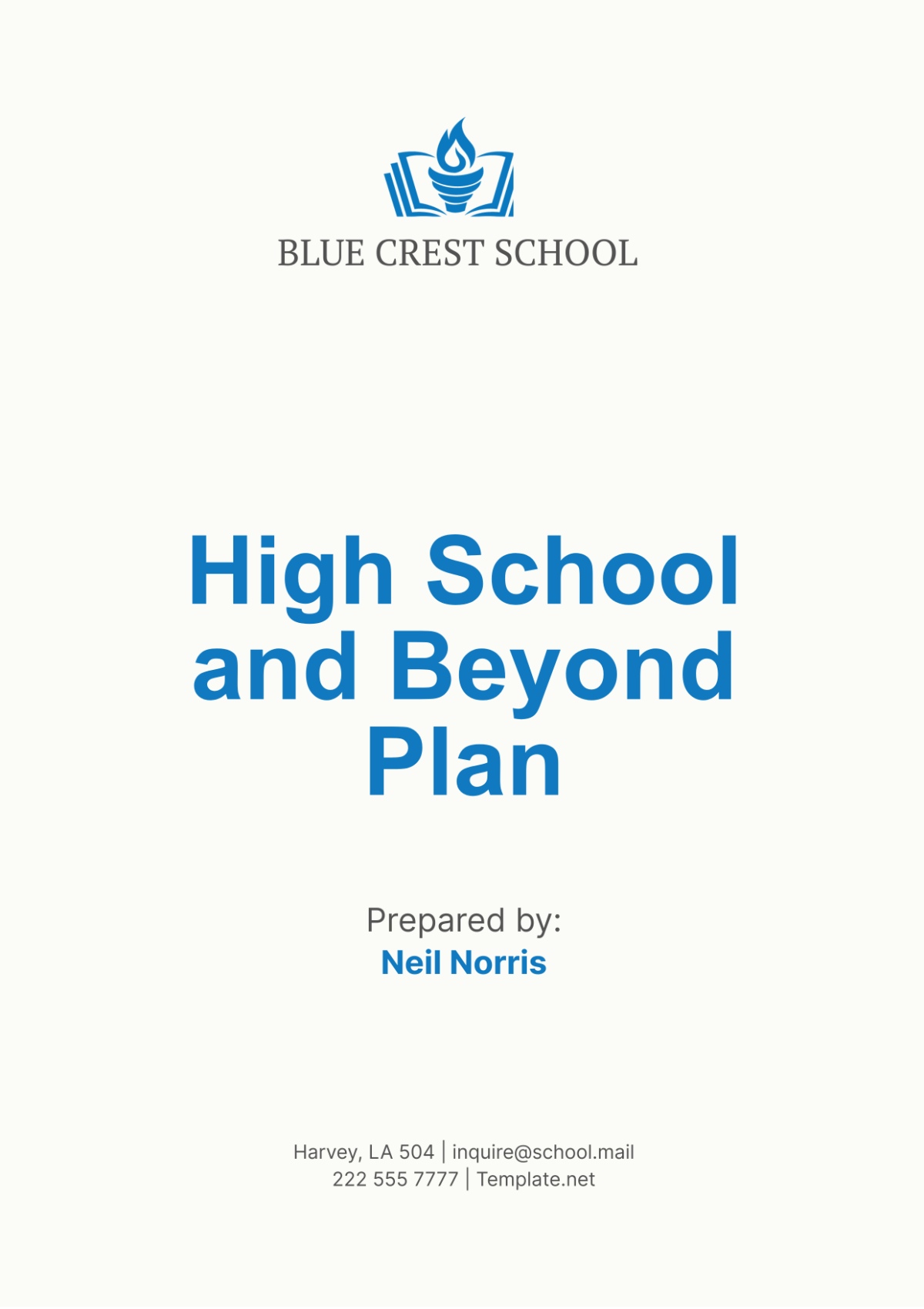
Introduction
The transition from high school to post-secondary education or the workforce is a critical period in a student's life. This High School and Beyond Plan is designed to guide students, parents, and educators in preparing for this transition. The goal is to ensure that every student is equipped with the knowledge, skills, and resources necessary to achieve their post-secondary goals, whether they involve higher education, vocational training, military service, or direct entry into the workforce.
I. Executive Summary
The High School and Beyond Plan is a comprehensive initiative designed to support high school students as they prepare for their futures. Whether their goals involve post-secondary education, entering the workforce, or other pathways, this plan provides the necessary guidance and resources. By addressing academic, social, and emotional needs, [Your Company Name] ensures that each student can make informed decisions and successfully transition to the next phase of their lives.
A. Mission Statement
The mission of [Your Company Name] is to empower high school students with the tools and guidance they need to make informed decisions about their future, and to successfully transition to post-secondary education or careers. We are committed to providing comprehensive support that addresses academic, social, and emotional needs, fostering a holistic approach to student development. Our goal is to create an environment where students feel supported and confident in their abilities to pursue their ambitions, regardless of their chosen path.
B. Objectives
Provide Personalized Academic and Career Counseling:
Each student has unique strengths, interests, and aspirations. Our program focuses on personalized counseling to help students identify their goals and develop tailored plans to achieve them. This includes regular one-on-one sessions with counselors who provide individualized guidance on course selection, college applications, career choices, and more. By understanding each student's specific needs, we can offer targeted advice and support that aligns with their personal and academic development.
Ensure Students Understand Their Post-Secondary Options and the Pathways to Achieve Them:
Knowledge is power, especially when it comes to making life-altering decisions about one's future. We ensure that students are well-informed about the various post-secondary options available to them, including four-year colleges, community colleges, vocational schools, military service, and direct entry into the workforce. Through workshops, information sessions, and resource materials, we provide detailed insights into each pathway, the requirements, and the steps needed to pursue them. This comprehensive understanding helps students make choices that are best suited to their goals and circumstances.
Facilitate Access to Financial Aid and Scholarship Resources:
Financial barriers should not prevent any student from pursuing their educational and career goals. Our program provides extensive support in navigating the complex world of financial aid and scholarships. We offer workshops on completing the Free Application for Federal Student Aid (FAFSA), understanding different types of financial aid (grants, loans, work-study programs), and identifying scholarship opportunities. Additionally, we provide one-on-one assistance to help students and their families complete applications accurately and on time, ensuring they receive the financial support they need.
Develop Essential Life Skills, Including Time Management, Financial Literacy, and Self-Advocacy:
Success in post-secondary education and the workforce requires more than academic knowledge; it requires essential life skills. We integrate life skills development into our program to prepare students for the demands of adult life. This includes teaching time management techniques to help students balance their academic, extracurricular, and personal responsibilities. Financial literacy sessions cover budgeting, banking, credit management, and the importance of saving and investing. Self-advocacy workshops empower students to communicate effectively, make informed decisions, and seek out resources and support when needed. These skills are crucial for long-term success and independence.
Encourage and Support Participation in Extracurricular Activities, Internships, and Volunteer Work:
Extracurricular activities, internships, and volunteer work play a vital role in personal growth and career development. We actively encourage students to engage in these experiences to build their skills, explore their interests, and enhance their resumes. Our program includes partnerships with local businesses, non-profits, and community organizations to provide a wide range of opportunities. We also offer support in finding and securing these positions, preparing students for interviews, and guiding them through their experiences. These activities not only enrich students' lives but also provide valuable insights and connections that can influence their future career paths.
The High School and Beyond Plan by [Your Company Name] is designed to be a comprehensive, supportive framework that addresses the multifaceted needs of high school students. By providing personalized counseling, ensuring a deep understanding of post-secondary options, facilitating access to financial aid, developing essential life skills, and encouraging participation in extracurricular activities, internships, and volunteer work, we prepare students for successful transitions to their future endeavors. Our mission is to empower each student to realize their potential and achieve their dreams with confidence and competence.
II. Student Assessment and Planning
Proper assessment and planning are fundamental to guiding students toward their post-secondary goals. This chapter outlines the processes for evaluating students' academic performance, career interests, skills, and aptitudes. It also details the creation of Individualized Learning Plans (ILPs) that set personalized academic and career goals, ensuring students receive tailored support throughout their high school journey.
A. Initial Assessment
Academic Evaluation: Assess each student's academic performance, strengths, and areas for improvement through standardized tests, GPA analysis, and teacher feedback.
Career Interest Inventory: Administer career interest assessments to help students identify potential career paths based on their interests and strengths.
Skills and Aptitudes: Evaluate students' skills and aptitudes to align them with appropriate career and educational paths.
B. Individualized Learning Plan (ILP)
Goal Setting: Assist students in setting short-term and long-term academic and career goals.
Course Selection: Guide students in selecting high school courses that align with their post-secondary goals.
Extracurricular Activities: Recommend extracurricular activities that support students' interests and career aspirations.
Regular Reviews: Conduct quarterly reviews of each student's ILP to track progress and make necessary adjustments.
III. Academic and Career Counseling
Academic and career counseling play a critical role in preparing students for life beyond high school. This chapter provides a comprehensive approach to course advising, tutoring, career exploration, internships, and work experience opportunities. It highlights the importance of personalized guidance in helping students navigate their academic and career pathways effectively.
A. Academic Counseling
Course Advising: Help students choose courses that meet graduation requirements and align with their post-secondary goals.
Tutoring and Academic Support: Provide access to tutoring and other academic support services for students who need additional help.
Advanced Placement and Dual Enrollment: Encourage participation in Advanced Placement (AP) courses and dual enrollment programs to earn college credits while in high school.
B. Career Counseling
Career Exploration: Offer resources and workshops on different career paths, job shadowing opportunities, and guest speakers from various industries.
Internships and Work Experience: Facilitate internships and work experience opportunities to provide practical insights into various careers.
Resume and Interview Skills: Conduct workshops on resume writing, job applications, and interview techniques.
IV. College Preparation
Preparing for college is a multifaceted process that requires careful planning and support. This chapter covers all aspects of college preparation, including college selection, standardized testing, and financial aid. It emphasizes the importance of providing students with the resources and assistance they need to successfully apply to and finance their college education.
A. College Selection
Researching Colleges: Guide students in researching colleges that fit their academic, social, and financial needs.
Campus Visits: Organize visits to local colleges and universities to give students a firsthand look at campus life.
Application Process: Provide step-by-step assistance with the college application process, including essay writing and recommendation letters.
B. Standardized Testing
Test Preparation: Offer preparation courses for standardized tests such as the SAT, ACT, and AP exams.
Test Registration: Assist students with registration for standardized tests and ensure they understand testing requirements and timelines.
C. Financial Aid and Scholarships
FAFSA Assistance: Provide workshops and one-on-one support for completing the Free Application for Federal Student Aid (FAFSA).
Scholarship Search: Help students identify and apply for scholarships and grants.
Financial Planning: Educate students and parents on financial planning for college, including understanding student loans and budgeting.
V. Alternative Post-Secondary Pathways
Not all students choose to pursue a traditional college education. This chapter explores alternative post-secondary pathways, including vocational and technical training, military service, and direct entry into the workforce. It provides information and resources to help students understand and prepare for these diverse opportunities.
A. Vocational and Technical Training
Program Exploration: Provide information on vocational and technical training programs, including certificate programs, apprenticeships, and trade schools.
Partnerships: Develop partnerships with local trade schools and vocational programs to facilitate student enrollment.
Career Readiness: Ensure students are aware of the certifications and skills required for various trades and technical careers.
B. Military Service
Recruitment Information: Offer information sessions with military recruiters from different branches.
ASVAB Testing: Assist students in preparing for and taking the Armed Services Vocational Aptitude Battery (ASVAB) test.
ROTC Programs: Provide information on Reserve Officers' Training Corps (ROTC) programs and military academies.
C. Direct Entry into the Workforce
Job Search Skills: Teach job search strategies, including online job searches, networking, and the use of job placement services.
Entry-Level Opportunities: Connect students with entry-level job opportunities in local businesses and industries.
Professional Skills Development: Offer workshops on workplace etiquette, communication skills, and professional behavior.
VI. Life Skills Development
Developing essential life skills is crucial for students' success in adulthood. This chapter focuses on teaching financial literacy, time management, and self-advocacy. It outlines programs and workshops designed to equip students with the skills they need to navigate personal and professional challenges confidently.
A. Financial Literacy
Budgeting: Teach students how to create and manage a personal budget.
Banking: Provide information on banking services, including checking and savings accounts.
Credit Management: Educate students on the importance of credit scores and how to manage credit responsibly.
B. Time Management
Prioritization: Help students develop prioritization skills to balance academic, extracurricular, and personal responsibilities.
Goal Setting: Teach goal-setting techniques to help students stay focused and motivated.
Stress Management: Offer strategies for managing stress and maintaining mental health.
C. Self-Advocacy
Communication Skills: Teach effective communication skills, including how to advocate for oneself in academic and professional settings.
Problem-Solving: Develop students' problem-solving abilities to handle challenges and make informed decisions.
Resource Utilization: Educate students on how to identify and utilize available resources, such as school counselors, community organizations, and online tools.
VII. Parent and Community Involvement
Engaging parents and the community is vital for creating a supportive environment for students. This chapter discusses strategies for involving parents in the planning process and building partnerships with local businesses and organizations. It highlights the benefits of community engagement and volunteer opportunities in enhancing student experiences and outcomes.
A. Parent Workshops
College Planning: Offer workshops to help parents understand the college planning process and how to support their children.
Financial Aid: Provide information sessions on financial aid options and the FAFSA process.
Career Guidance: Educate parents on how to assist their children in exploring and preparing for various career paths.
B. Community Partnerships
Local Businesses: Partner with local businesses to provide internships, job shadowing, and career exploration opportunities for students.
Non-Profit Organizations: Collaborate with non-profit organizations to offer additional resources and support services.
Higher Education Institutions: Develop partnerships with colleges and universities to facilitate access to college readiness programs and dual enrollment opportunities.
C. Volunteer Opportunities
Community Service: Encourage students to participate in community service projects to build a sense of responsibility and civic engagement.
Parent Volunteers: Recruit parents to volunteer in school events, workshops, and mentoring programs.
Alumni Network: Create an alumni network to provide mentoring and support to current students.
VIII. Monitoring and Evaluation
To ensure the effectiveness of the High School and Beyond Plan, continuous monitoring and evaluation are essential. This chapter details the mechanisms for tracking student progress, gathering feedback, and implementing improvements. It underscores the importance of data-driven decision-making and stakeholder involvement in maintaining a high-quality support system for students.
A. Tracking Progress
Student Portfolios: Maintain student portfolios that include academic records, career interest inventories, and progress towards goals.
Regular Check-Ins: Schedule regular check-ins with students to review their progress and adjust their plans as needed.
Data Analysis: Analyze data on student outcomes, such as graduation rates, college enrollment, and job placement, to assess the effectiveness of the program.
B. Feedback Mechanisms
Surveys: Conduct surveys with students, parents, and educators to gather feedback on the program.
Focus Groups: Organize focus groups to discuss program strengths and areas for improvement.
Suggestion Box: Provide a suggestion box for anonymous feedback from students and parents.
C. Continuous Improvement
Annual Review: Conduct an annual review of the program to identify successes and areas for improvement.
Professional Development: Provide ongoing professional development for staff to stay updated on best practices in college and career counseling.
Stakeholder Involvement: Involve stakeholders in the planning and decision-making process to ensure the program meets the needs of all participants.
Conclusion
The High School and Beyond Plan is designed to provide comprehensive support to students as they transition from high school to post-secondary education or the workforce. By offering personalized guidance, academic and career counseling, and essential life skills development, we aim to equip students with the tools they need to succeed in their future endeavors. Through collaboration with parents, educators, and the community, we will create a supportive environment that fosters student success and prepares them for the challenges and opportunities that lie ahead.
- 100% Customizable, free editor
- Access 1 Million+ Templates, photo’s & graphics
- Download or share as a template
- Click and replace photos, graphics, text, backgrounds
- Resize, crop, AI write & more
- Access advanced editor
Prepare high school students for future success with Template.net's High School and Beyond Plan Template. This versatile tool, editable through our AI editor, facilitates comprehensive career and educational planning. Tailored for students and counselors, it ensures clarity and organization in setting goals and mapping pathways. Empower students to navigate their futures confidently with Template.net's customizable plan template.
You may also like
- Finance Plan
- Construction Plan
- Sales Plan
- Development Plan
- Career Plan
- Budget Plan
- HR Plan
- Education Plan
- Transition Plan
- Work Plan
- Training Plan
- Communication Plan
- Operation Plan
- Health And Safety Plan
- Strategy Plan
- Professional Development Plan
- Advertising Plan
- Risk Management Plan
- Restaurant Plan
- School Plan
- Nursing Home Patient Care Plan
- Nursing Care Plan
- Plan Event
- Startup Plan
- Social Media Plan
- Staffing Plan
- Annual Plan
- Content Plan
- Payment Plan
- Implementation Plan
- Hotel Plan
- Workout Plan
- Accounting Plan
- Campaign Plan
- Essay Plan
- 30 60 90 Day Plan
- Research Plan
- Recruitment Plan
- 90 Day Plan
- Quarterly Plan
- Emergency Plan
- 5 Year Plan
- Gym Plan
- Personal Plan
- IT and Software Plan
- Treatment Plan
- Real Estate Plan
- Law Firm Plan
- Healthcare Plan
- Improvement Plan
- Media Plan
- 5 Year Business Plan
- Learning Plan
- Marketing Campaign Plan
- Travel Agency Plan
- Cleaning Services Plan
- Interior Design Plan
- Performance Plan
- PR Plan
- Birth Plan
- Life Plan
- SEO Plan
- Disaster Recovery Plan
- Continuity Plan
- Launch Plan
- Legal Plan
- Behavior Plan
- Performance Improvement Plan
- Salon Plan
- Security Plan
- Security Management Plan
- Employee Development Plan
- Quality Plan
- Service Improvement Plan
- Growth Plan
- Incident Response Plan
- Basketball Plan
- Emergency Action Plan
- Product Launch Plan
- Spa Plan
- Employee Training Plan
- Data Analysis Plan
- Employee Action Plan
- Territory Plan
- Audit Plan
- Classroom Plan
- Activity Plan
- Parenting Plan
- Care Plan
- Project Execution Plan
- Exercise Plan
- Internship Plan
- Software Development Plan
- Continuous Improvement Plan
- Leave Plan
- 90 Day Sales Plan
- Advertising Agency Plan
- Employee Transition Plan
- Smart Action Plan
- Workplace Safety Plan
- Behavior Change Plan
- Contingency Plan
- Continuity of Operations Plan
- Health Plan
- Quality Control Plan
- Self Plan
- Sports Development Plan
- Change Management Plan
- Ecommerce Plan
- Personal Financial Plan
- Process Improvement Plan
- 30-60-90 Day Sales Plan
- Crisis Management Plan
- Engagement Plan
- Execution Plan
- Pandemic Plan
- Quality Assurance Plan
- Service Continuity Plan
- Agile Project Plan
- Fundraising Plan
- Job Transition Plan
- Asset Maintenance Plan
- Maintenance Plan
- Software Test Plan
- Staff Training and Development Plan
- 3 Year Plan
- Brand Activation Plan
- Release Plan
- Resource Plan
- Risk Mitigation Plan
- Teacher Plan
- 30 60 90 Day Plan for New Manager
- Food Safety Plan
- Food Truck Plan
- Hiring Plan
- Quality Management Plan
- Wellness Plan
- Behavior Intervention Plan
- Bonus Plan
- Investment Plan
- Maternity Leave Plan
- Pandemic Response Plan
- Succession Planning
- Coaching Plan
- Configuration Management Plan
- Remote Work Plan
- Self Care Plan
- Teaching Plan
- 100-Day Plan
- HACCP Plan
- Student Plan
- Sustainability Plan
- 30 60 90 Day Plan for Interview
- Access Plan
- Site Specific Safety Plan
